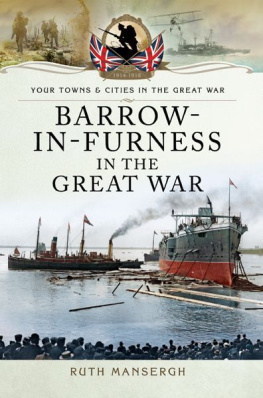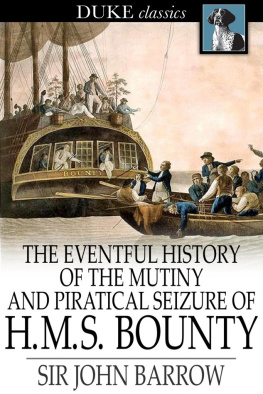Dedication
For my dad, the late John Tyson Mansergh (school teacher), my granddad, Peter William Weightman (19202005). Also in memory of the late Sally Sykes (ne Tyson) of High Nibthwaite and Kirkby-in-Furness, whose husband Charlie worked for Burlington Slate.
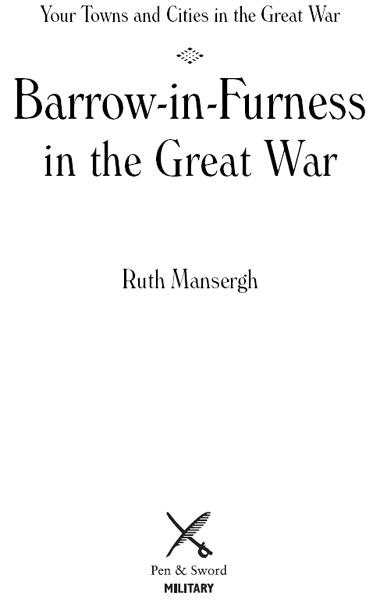
First published in Great Britain in 2015 by
PEN & SWORD MILITARY
an imprint of
Pen and Sword Books Ltd
47 Church Street
Barnsley
South Yorkshire S70 2AS
Copyright Ruth Mansergh, 2015
ISBN: 978 1 78383 111 1
EPUB ISBN: 978 1 47385 976 0
PRC ISBN: 978 1 47385 975 3
The right of Ruth Mansergh to be identified as the author of
this work has been asserted by her in accordance with the Copyright,
Designs and Patents Act 1988.
A CIP record for this book is available from the British Library
All rights reserved. No part of this book may be reproduced or transmitted
in any form or by any means, electronic or mechanical including
photocopying, recording or by any information storage and retrieval
system, without permission from the Publisher in writing.
Printed and bound in England
by CPI Group (UK) Ltd, Croydon, CR0 4YY
Typeset in Times New Roman by Chic Graphics
Pen & Sword Books Ltd incorporates the imprints of
Pen & Sword Archaeology, Atlas, Aviation, Battleground, Discovery,
Family History, History, Maritime, Military, Naval, Politics, Railways,
Select, Social History, Transport, True Crime, Claymore Press,
Frontline Books, Leo Cooper, Praetorian Press, Remember When,
Seaforth Publishing and Wharncliffe.
For a complete list of Pen and Sword titles please contact
Pen and Sword Books Limited
47 Church Street, Barnsley, South Yorkshire, S70 2AS, England
E-mail:
Website: www.pen-and-sword.co.uk
Contents

Author Biography

Ruth Mansergh is a full-time mother of two who has worked as a journalist and as a freelance sub-editor/proofreader. She has a degree in English with Social History from Leeds University. Ruth has a long-standing interest in the history of the north of England inherited from her father and grandfather, especially in the history of Cumbria, the area where she was brought up.
Preface

This book reveals how vital Barrows industrial output was to the 19141918 war effort. It also uncovers little-known stories of Barrovians and men from the surrounding area who served in the armed forces, as well as the areas wartime heroines. It is designed to be accessible to all, and for this reason it includes background information on the growth of Barrow. It also acts as a reference guide to local First World War soldiers and includes information on vessels built at Barrow both before and during the war.
Ruth Mansergh, 2014
CHAPTER 1
The War Effort in Barrow

Where the Lakes Meet the Sea
Industrial towns lie on the coastal lowland to the west and south-west of the high fells of the Lake District. Not all of them are ugly, nor were their builders entirely lacking in vision. Leaving the beaten track behind, we will discover, commemorate and reflect on the impact of Great War on the relatively isolated, planned town of Barrow-in-Furness. The town was originally situated within the county of Lancashire (from 1974, it has been part of Cumbria) and until 1780 it was a hamlet, consisting of just five farmhouses.
Germany invaded Belgium, Britains ally, on 4 August 1914, forcing Britain to declare war in support of vulnerable Belgium. War had come to Barrow and the towns docks, airship sheds and other sensitive areas were immediately placed out of bounds to casual visitors. Barrow traders strove to give the impression that it was business as usual, and notices saying as much were displayed in shop windows. No one wanted to contemplate the possibility of the war lasting beyond Christmas.
Yet, thousands of local men went on to fight and Barrow gained a garrison, while its industrial output soared. The course of the First World War was determined as much by the work done in Britains factories as by the fighting carried out on the battlefields. Thousands of women came to Barrow, and many other factory towns, to help make munitions. Local women too did their bit for the war effort as munitionettes, as well as driving trams and working as farm labourers, with many enjoying a disposable income for the first time.
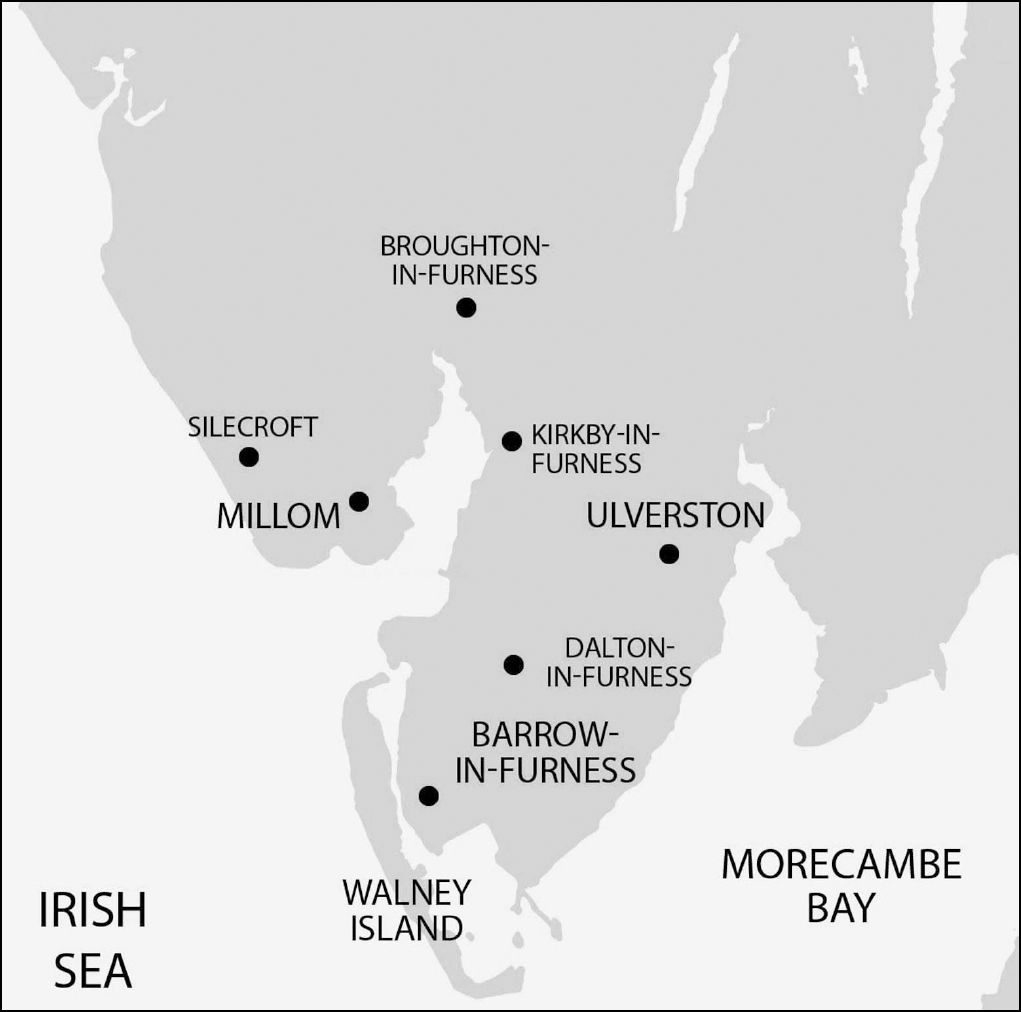
Highlights of the Barrow area include Walney Island and Coniston Water.
Airships, among them the famous Mayfly, were built in Barrow during the First World War, while the towns production of naval vessels, including submarines also rapidly accelerated, and the local steelworks saw an upturn in trade. Barrows shipyard is situated on Barrow Island and is now run by BAE Systems Maritime, yet it is still referred to locally by the name of its previous owner, Vickers Ltd.
Vickers Ltd was formed in Sheffield by the miller Edward Vickers as a steel foundry in 1828. The company went public in 1867 as Vickers, Sons & Company and it produced its first artillery piece in 1890. Meanwhile, William Ashburner, the first Barrow shipbuilder, established a yard in 1847 on a site now covered by the Devonshire Dock Hall and then moved to Hindpool, bordered by Barrow Island, in 1865. The last Ashburner ship to be completed, in 1884, was a schooner, J&M Garratt.
The Iron Shipbuilding Company was founded in 1871 by Sir James Ramsden. On registering the new company in 1872, he changed the name to the Barrow Ship Building Company. Barrow shipyard received its first order from the British Admiralty in 1877. The shipyard earned a growing reputation for high quality naval ships and in 1888, having bought out the gun interests of the Maxim Nordenfelt Guns and Ammunition Company, it was renamed the Naval Construction and Armaments Company. The company was created to consolidate the shipbuilding efforts in Barrow and focus these efforts on making warships at a time of pan-European arms escalation.
In 1897, Vickers bought the Barrow Shipbuilding Company and its subsidiary the Maxim Nordenfelt Guns and Ammunition Company, becoming Vickers, Sons and Maxim, Limited. The shipyard at Barrow became the Naval Construction Yard. In 1911, the company was renamed Vickers Ltd Ordnance and ammunition made during this period, including World War One, was stamped V.S.M.
Housing for Industrial Workers
Barrow Island has not been an island since the 1980s, when part of the Devonshire Dock was filled in to provide land for the building of Devonshire Dock Hall, or Maggies Farm. Over on Walney Island, over Walney Bridge (officially known as the Jubilee Bridge), Vickers Ltd built Vickerstown, a planned estate for the companys workers, in 1898. It was described in publicity at the time as a model marine garden city.
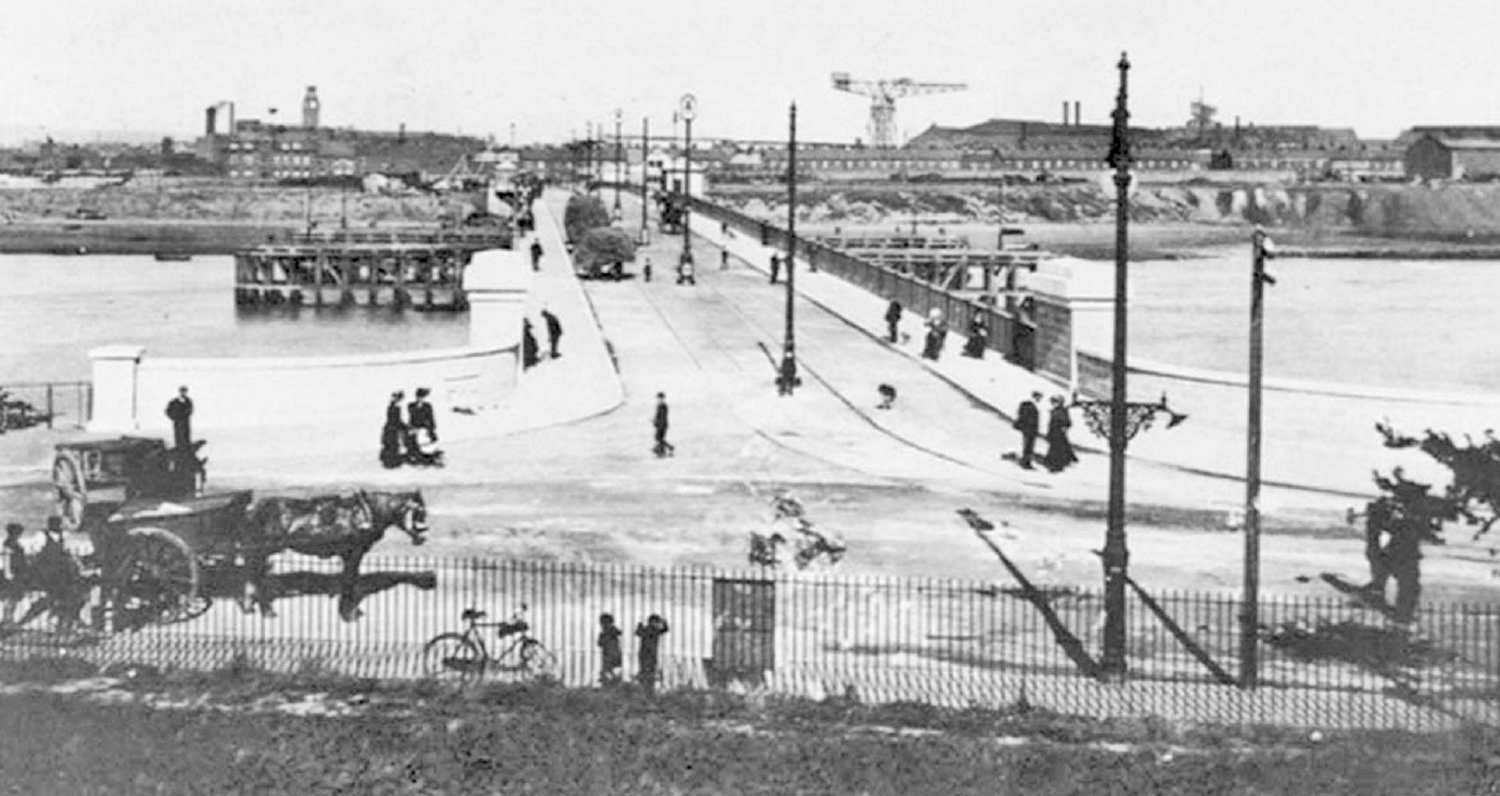
Connecting Barrow: Walney Bridge, c. 1910 began the process of merging Walney into a suburb of Barrow. (By kind permission.)
Next page
